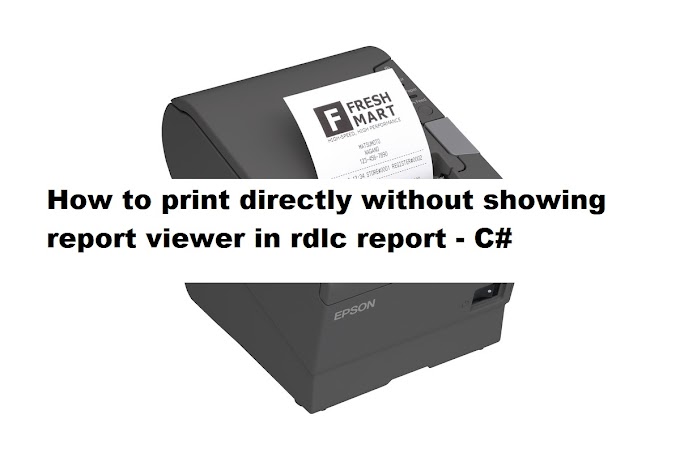In this tutorial we'll go through a simple example of how to implement
JWT (JSON Web Token) authentication in an ASP.NET Core 3.0 API with C#.
1. Create a web api application using asp.net core :(JWTAuth)
2. Create a Controller:
LoginController:
using System;
using System.Collections.Generic;
using System.IdentityModel.Tokens.Jwt;
using System.Linq;
using System.Security.Claims;
using System.Text;
using System.Threading.Tasks;
using JWTAuth.Model;
using Microsoft.AspNetCore.Authentication.JwtBearer;
using Microsoft.AspNetCore.Authorization;
using Microsoft.AspNetCore.Http;
using Microsoft.AspNetCore.Mvc;
using Microsoft.Extensions.Configuration;
using Microsoft.IdentityModel.Tokens;
namespace JWTAuth.Controllers
{
[Route("api/[controller]")]
[ApiController]
public class LoginController : ControllerBase
{
private IConfiguration _config;
public LoginController(IConfiguration config)
{
_config = config;
}
[HttpGet]
public IActionResult Login(string userId, string pass)
{
UserModel login = new UserModel();
login.Username = userId;
login.Pass = pass;
IActionResult response = Unauthorized();
var user = AuthenticateUser(login);
if (user != null)
{
var tokenString = GenerateJSONWebToken(user);
response = Ok(new { token = tokenString });
}
return response;
}
private UserModel AuthenticateUser(UserModel login)
{
UserModel user = null;
if (login.Username == "ashproghelp" && login.Pass == "123")
{
user = new UserModel { Username = "AshProgHelp", EmailAddress = "AshProgHelp@gmail.com", Pass = "123" };
}
return user;
}
private string GenerateJSONWebToken(UserModel userInfo)
{
var securityKey = new SymmetricSecurityKey(Encoding.UTF8.GetBytes(_config["Jwt:Key"]));
var credentials = new SigningCredentials(securityKey, SecurityAlgorithms.HmacSha256);
var claims = new[] {
new Claim(JwtRegisteredClaimNames.Sub, userInfo.Username),
new Claim(JwtRegisteredClaimNames.Email, userInfo.EmailAddress),
new Claim(JwtRegisteredClaimNames.Jti, Guid.NewGuid().ToString())
};
var token = new JwtSecurityToken(
issuer: _config["Jwt:Issuer"],
audience: _config["Jwt:Issuer"],
claims,
expires: DateTime.Now.AddMinutes(120),
signingCredentials: credentials);
var encodetoken = new JwtSecurityTokenHandler().WriteToken(token);
return encodetoken;
}
[Authorize]
[HttpPost("Post")]
public string Post()
{
var identity = HttpContext.User.Identity as ClaimsIdentity;
IList<Claim> claim = identity.Claims.ToList();
var userName = claim[0].Value; //claim.Where(c => c.Type == "Sub").Select(c => c.Value).SingleOrDefault();
return "Welcome To:" + userName;
}
[HttpGet ("GetValue")]
[Authorize]
public ActionResult<IEnumerable<string>> Get()
{
return new string[] { "value1", "value2", "value3", "value4", "value5" };
}
}
}
3. appsettings.json:
"Jwt": {
"Key": "AshProghelpSecretKey",
"Issuer": "ashproghelp.com"
}
4. Startup.cs:
public void ConfigureServices(IServiceCollection services)
{
services.AddCors(options =>
{
options.AddPolicy("CorsPolicy", builder => builder.AllowAnyOrigin().AllowAnyMethod().AllowAnyHeader().AllowCredentials().Build());
});
services.AddControllers();
services.AddAuthentication(JwtBearerDefaults.AuthenticationScheme)
.AddJwtBearer(options =>
{
options.TokenValidationParameters = new TokenValidationParameters
{
ValidateIssuer = true,
ValidateAudience = true,
ValidateLifetime = true,
ValidateIssuerSigningKey = true,
ValidIssuer = Configuration["Jwt:Issuer"],
ValidAudience = Configuration["Jwt:Issuer"],
IssuerSigningKey = new SymmetricSecurityKey(Encoding.UTF8.GetBytes(Configuration["Jwt:Key"]))
};
});
services.AddMvc();
}
--==================================================
public void Configure(IApplicationBuilder app, IWebHostEnvironment env)
{
if (env.IsDevelopment())
{
app.UseDeveloperExceptionPage();
}
app.UseHttpsRedirection();
app.UseRouting();
app.UseAuthentication();
app.UseAuthorization();
app.UseEndpoints(endpoints =>
{
endpoints.MapControllers();
});
}
5. Create UserModel Calss:
public class UserModel
{
public string Username { get; set; }
public string Pass { get; set; }
public string EmailAddress { get; set; }
public DateTime DateOfJoin { get; set; }
}
For more details follow this video:







0 Comments